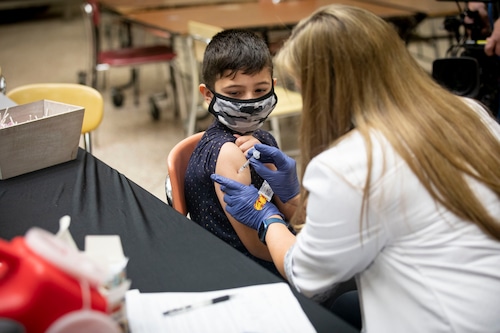Immunizations: Why Vaccine Coverage Matters for Oregon’s Children
Immunizations play a critical role in protecting both individuals and communities from preventable diseases. In Oregon, recent trends show shifts in vaccine coverage that have significant implications for public health. Understanding these trends and the reasons behind them can help families make informed decisions and protect vulnerable populations.

The State of Immunizations in Oregon
For the 2024-25 school year, a record 9.7% of Oregon kindergartners claimed nonmedical exemptions for required vaccines, up nearly 1% from the previous year. This marks the third consecutive year that Oregon has seen a decline in vaccination rates among young children. According to the Oregon Health Authority, the current rate of nonmedical exemptions is the fourth-highest in the US. While most families in Oregon continue to vaccinate their children, only 86.3% of kindergartners were fully vaccinated for the 2024-2025 school year.
These numbers matter. "The increase in nonmedical exemptions weakens community immunity, creating opportunities for outbreaks of serious diseases that vaccines have nearly eradicated," says Paul Cieslak, medical director for communicable diseases and immunizations at OHA. In communities with lower vaccine coverage, outbreaks of diseases like measles become more likely, putting everyone at risk—especially those who cannot be vaccinated.
Why Immunizations Are Essential
Immunizations are one of the greatest achievements of modern medicine. Protection provided by vaccines helps stop the spread of diseases such as measles, polio, and pertussis. For vulnerable populations, including infants, people with weakened immune systems, and the elderly, community-wide vaccine coverage is crucial. As Stacy de Assis Matthews, the school immunization coordinator at the Oregon Immunization Program, puts it, “Robust vaccination coverage not only protects individual children but also safeguards those who cannot be vaccinated due to age, medical conditions, or other vulnerabilities.”
Alarming trends show that measles vaccination rates among Oregon’s kindergarten students have dropped to 90.5%. Health experts warn that this is nearly five percentage points below the level needed for herd immunity. According to CDC data cited by OregonLive, 96% of the 1,001 measles cases in the US this year were in people who were either unvaccinated or whose status was unknown.
Understanding Nonmedical Exemptions
A nonmedical exemption allows parents or guardians to opt out of required immunizations for personal, religious, or philosophical reasons. The process in Oregon typically requires viewing an educational video and possibly consulting a healthcare professional. The concern with rising nonmedical exemptions is that they can lower overall vaccine coverage, making it easier for preventable diseases to return.
As reported in the Statesman Journal, some private and charter schools in Oregon have especially low vaccination rates, with less than half of students vaccinated in some cases. Health officials emphasize that these trends threaten decades of progress in disease prevention.
Supporting Public Confidence in Vaccination Programs
Building and maintaining trust in immunization programs is essential. The Oregon Health Authority continues to work on education and outreach to inform the public about the importance of immunizations. Their efforts are part of a broader strategy to prevent disease outbreaks and ensure the safety and wellbeing of all children in Oregon.
If you have questions about vaccine requirements or want to check immunization rates for preschools and child care facilities, you can access updated information through the Oregon Immunization Coverage webpage.
Conclusion
Immunizations are crucial for protecting your children and your community. Staying informed about vaccination requirements and the risks associated with declining coverage helps ensure that everyone, especially the most vulnerable, remains safe from preventable diseases. For more information or support, contact your local health department or visit the resources linked above. By choosing to vaccinate, you are contributing to a healthier future for Oregon.